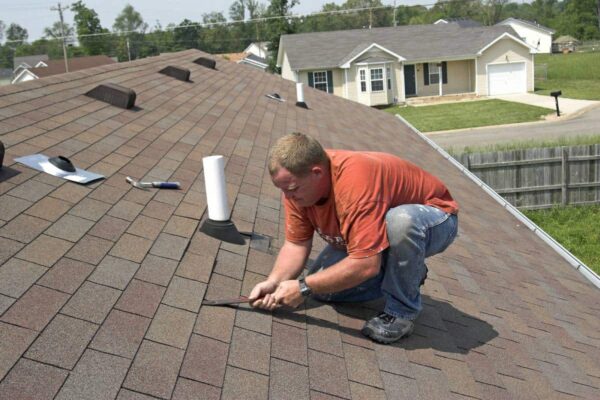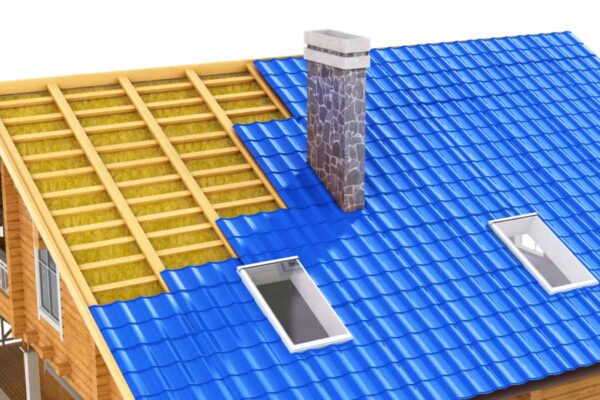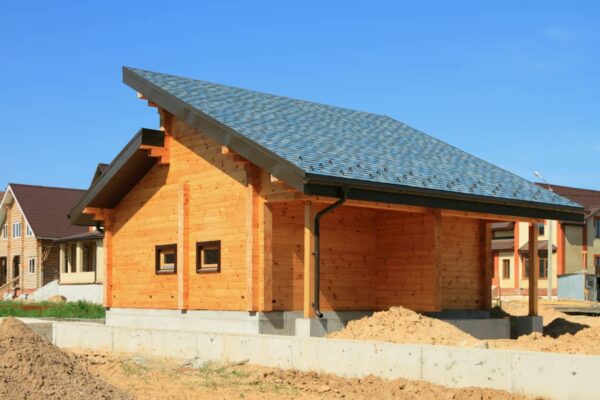Proper underlayment is a critical component when it comes to ensuring the longevity and safety of your roofing system. Typically composed of a waterproof or a water-resistant membrane, roof underlayment is an essential layer that provides insulation and protection against inclement weather conditions.
Choosing the appropriate thickness for your underlayment can be a complex task due to various factors like local weather patterns, geographic location, and shingle type.
In this informative article we’ll explore how to determine the ideal thickness grade for your underlayment, guaranteeing optimal performance in any environment.
Determine the Type of Roof you Have
Selecting the appropriate underlayment is a crucial step in determining the type of roof that best suits your specific needs. The thickness and grade of the underlayment you choose should be a well-informed decision made in consultation with an expert in roofing systems.
Variables that must be taken into account include:
• local weather patterns
• geographic location
• the type of shingle used
• asbestos content in homes built before 1990
For instance, felt paper has been widely used as an underlayment option for many years. However, its vulnerability to deterioration due to heavy rain and frequent temperature fluctuations makes it unsuitable for areas with severe weather conditions. In such circumstances, self-adhered membranes or rubberized asphalt roofing membranes are more appropriate alternatives.
In locations that are susceptible to heavy snow and ice, it is advisable to consider composite decking as the optimal option for safeguarding against these potential hazards. Traditional underlayment alternatives like felt paper may not provide adequate protection in such situations.
Ultimately, the best way to determine the ideal thickness grade for your underlayment is to consult with seasoned roofing professionals who are familiar with your specific locale’s building codes and geography. This research will help you pick the most appropriate product for your requirements right from the start, saving you time and money by avoiding the need for additional reinforcement after proper installation.
Consider the Climate and Weather Conditions
In areas with significant variations in temperature and severe weather events (thunderstorms, high winds, snowfall, or extreme temperatures) it is essential to utilize materials with exceptional strength to prevent wind-driven rain and ice dams. Polyester membrane is one such product that offers the necessary protection against these elements.
It’s also advisable to take geographic location into account when selecting the appropriate underlayment grade. For instance, in coastal regions where saltwater exposure can cause significant damage over time (or on roofs with steep pitches where wind gusts or heavy snow accumulation are common), higher grades of underlayment may be necessary to offer protection against water condensation.
This is especially crucial for multi-story apartment complexes or homes located close to each other, where the problem of moisture can spread rapidly. It’s crucial to ensure proper insulation accompanies any underlayment layers positioned between rafters and decking boards to minimize thermal short circuits during the winter months.
By adopting a strategic approach that considers climate conditions and regional variables, homeowners can make informed judgments about the appropriate grade of roof underlayment that meets the requirements for their upcoming project.
Research Different types of Underlayment Materials
Roof underlayment thickness is a vital factor to consider; however, it is frequently misinterpreted. A thicker material may appear to offer superior protection. This is not necessarily accurate since some climates require lighter-weight coverings, while others require heavier ones. It is essential to research which underlayment grade is most appropriate for your specific location to ensure optimal coverage and maximum effectiveness against the elements.
Fortunately, homeowners have a variety of underlayment options available that can handle virtually any weather conditions they may encounter. Cementitious backer units (CBUs), such as tar paper, are specifically designed for warmer climates where intense sunshine can cause roofs of lower grades to dry out quickly.
Roofing felts and synthetic underlayment offer extra reinforcement (through thick layers of polymers that provide effective water shielding) in colder temperatures or extended periods of rain/snowfall.
Self-adhesive membranes offer a reliable line of defense against weather elements. This choice is also an economically friendly option compared to other alternatives like rubberized asphalt felt. The latter, however, provides incomparable durability with less need for maintenance.
Assess the Thickness Requirements for your Roof
When establishing the appropriate thickness requirements for a roof, it is vital to consider multiple factors that guarantee protection from harsh weather conditions and provide an additional layer of insulation. Local climate conditions, geographic location, and the type of shingle utilized must all be considered to select the ideal thickness grade. This approach helps ensure that the underlayment provides the necessary protection and helps regulate temperature effectively.
In environments with high temperatures or regions that might face extreme wind events like hurricanes, a thicker gauge underlayment may be necessary to provide optimal coverage and durability. Thicker grades are highly recommended for tile roofs (since the weight of tile could make standard thickness grades insufficient for this material).
Areas prone to flooding or intense rain should also consider thicker varieties as added protection against water damage caused by heavy downpours. Selecting the appropriate thickness grade is crucial to ensure that your roof is resilient enough to withstand the potentially adverse weather conditions it may face over its lifetime. Making a wise investment is the goal in the long run!
Compare Prices for What Best Meets Your Needs
Making price comparisons for the best roof underlayment that suits your requirements is a vital step to ensure you get the optimal product for your investment. The price differences among various suppliers and manufacturers can be significant, making it necessary to conduct comprehensive research beforehand.
A productive starting point would be to evaluate multiple online reviews from customers who have previously purchased similar products. This enables you to assess the reliability of specific brands and which ones offer the most value for money in terms of thickness specifications.
In addition, it is crucial to consider warranty details and shipping costs when choosing the most appropriate option for your budget and requirements. These factors may have a significant impact on your decision-making process and should be carefully evaluated.
Choose the Right Thickness for Your Roof Underlayment
There are several critical factors to consider when selecting the appropriate thickness for a roof underlayment, including the local climate conditions, geographic location, type of shingle used, and more.
Conducting thorough research beforehand can help determine the ideal thickness grade that fits your purposes, guaranteeing optimal safety and longevity. Homeowners can ensure they receive optimal protection against inclement weather conditions (by being well-informed about the factors that affect roofing material performance) as well as understanding the amount of underlayment required based on geographic considerations.
Ultimately, it is crucial to make a well-informed decision by consulting with experts who understand the specific requirements of your geographic location. This approach will provide you with a comprehensive and effective solution that will keep your home protected for years to come.









